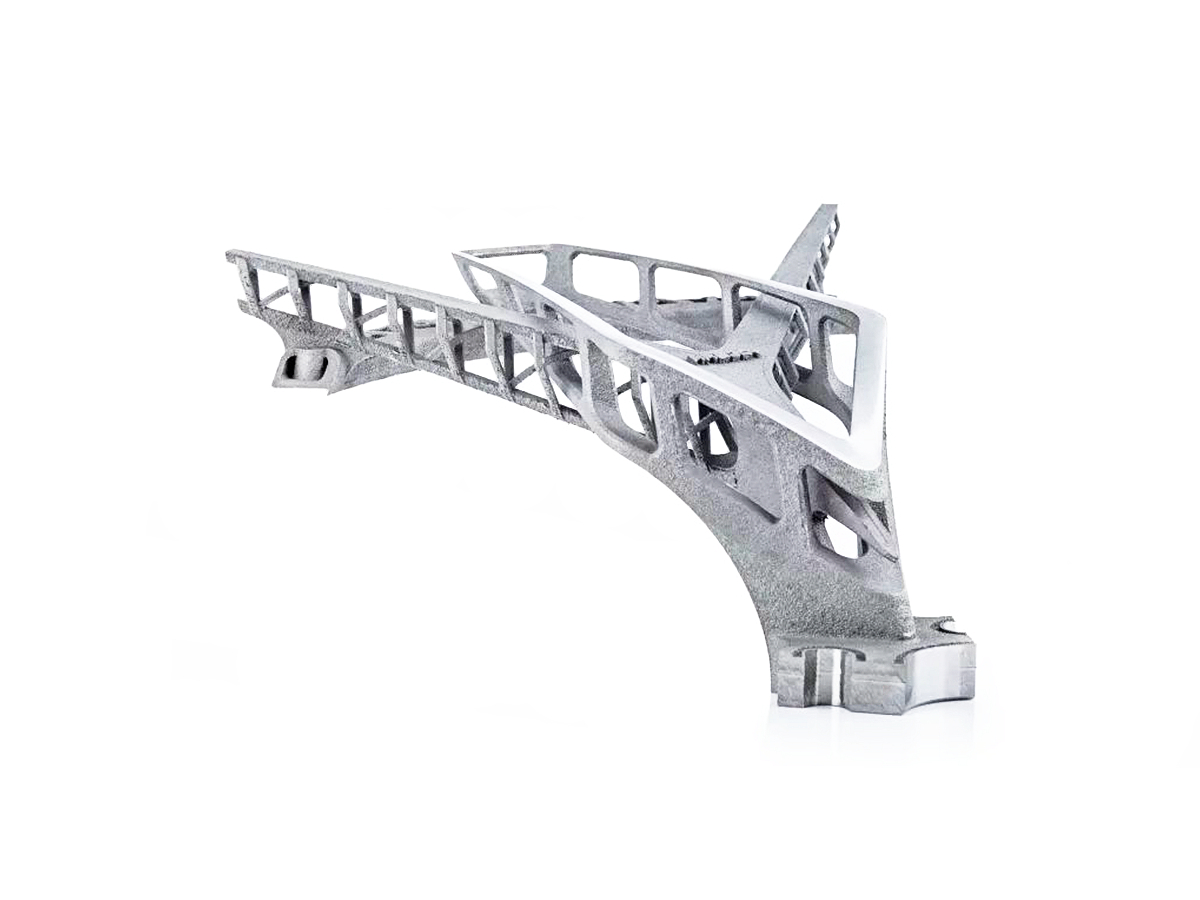Online Titanium 3D Printing: Lightweight, Strong, and Corrosion-Resistant Components
Introduction
Online titanium 3D printing services enable rapid production of lightweight, high-strength, and corrosion-resistant components tailored for aerospace, medical, automotive, and industrial applications. Using precision additive manufacturing technologies such as Selective Laser Melting (SLM) and Electron Beam Melting (EBM), titanium alloys like Ti-6Al-4V (Grade 5) deliver exceptional performance with dimensional accuracy of ±0.05 mm and densities over 99.8%.
Compared to conventional forging and machining, online titanium 3D printing shortens production cycles by up to 60%, reduces material waste by approximately 70%, and facilitates the fabrication of highly complex geometries impossible through traditional methods.
Applicable Material Matrix
Material | Density (g/cm³) | Tensile Strength (MPa) | Yield Strength (MPa) | Elongation (%) | Corrosion Resistance |
|---|---|---|---|---|---|
4.43 | 950 | 880 | 14% | Excellent | |
4.43 | 900 | 830 | 10% | Excellent | |
4.52 | 950 | 880 | 12% | Excellent | |
4.51 | 344 | 275 | 20% | Excellent | |
4.65 | 1100 | 1030 | 12% | Very Good |
Material Selection Guide
Ti-6Al-4V (Grade 5): The most widely used titanium alloy for aerospace structures, medical devices, and high-performance industrial parts, offering an outstanding balance of strength, weight, and corrosion resistance.
Ti-6Al-4V ELI (Grade 23): Recommended for biomedical implants requiring improved fracture toughness and enhanced fatigue performance.
Ti-6Al-7Nb: Suitable for long-term implantable medical devices, offering excellent biocompatibility and mechanical strength.
CP-Ti (Grade 2): Best for corrosion-resistant applications in marine and chemical industries, where moderate strength and high ductility are advantageous.
Ti-6Al-2Sn-4Zr-6Mo: Ideal for aerospace components requiring superior tensile strength and operational stability at elevated temperatures.
Process Performance Matrix
Attribute | Titanium 3D Printing Performance |
|---|---|
Dimensional Accuracy | ±0.05 mm |
Density | >99.8% |
Layer Thickness | 20–60 μm |
Surface Roughness | Ra 5–15 μm |
Minimum Feature Size | 0.3–0.5 mm |
Process Selection Guide
Lightweight Designs: Enables weight reduction of up to 50% compared to traditionally manufactured metal parts while maintaining mechanical strength.
Superior Corrosion Resistance: Titanium components are ideal for aggressive environments such as marine, chemical, and biomedical fields.
High Structural Integrity: Achieves full material density (>99.8%), offering superior fatigue life and operational stability.
Complex Geometry Fabrication: Perfect for intricate lattice structures, internal cooling channels, and topology-optimized designs.
Case In-Depth Analysis: Online 3D-Printed Ti-6Al-4V Drone Structural Frames
A drone manufacturer required lightweight structural frames capable of withstanding high mechanical loads while maximizing flight endurance. Using our online titanium 3D printing service with Ti-6Al-4V (Grade 5), we produced frames achieving tensile strengths of 950 MPa, weight reductions of 35%, and dimensional accuracies within ±0.05 mm. The topology-optimized design allowed for a 20% improvement in flight time. Post-processing involved CNC machining for critical interfaces and anodizing to enhance corrosion resistance and wear performance.
Industry Applications
Aerospace and Aviation
Lightweight structural frames and fuselage components.
High-strength brackets, fasteners, and support struts.
Rocket nozzles and engine mounts.
Medical and Healthcare
Custom orthopedic implants and spinal fixation systems.
Patient-specific craniofacial and dental implants.
Surgical tools with enhanced durability and biocompatibility.
Automotive and Motorsports
High-performance suspension parts and connecting rods.
Lightweight racing vehicle structural components.
Custom intake manifolds and exhaust systems.
Mainstream 3D Printing Technology Types for Titanium Components
Selective Laser Melting (SLM): Preferred for intricate, high-density titanium parts requiring tight tolerances.
Electron Beam Melting (EBM): Ideal for producing large titanium structures with excellent mechanical properties.
Direct Metal Laser Sintering (DMLS): Optimal for small-to-medium-sized, highly detailed titanium components.
Binder Jetting: Suitable for prototype development and low-cost production runs.
Laser Metal Deposition (LMD): Best for coating, repairing, or adding features to existing titanium parts.
FAQs
What are the advantages of online titanium 3D printing over traditional manufacturing methods?
Which titanium alloys are most commonly used in 3D printed parts?
What industries benefit most from lightweight titanium 3D printed components?
What post-processing techniques are typically used for titanium 3D printed parts?
How does 3D printed titanium perform in corrosion-resistant applications?

